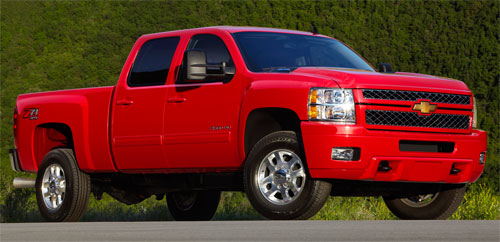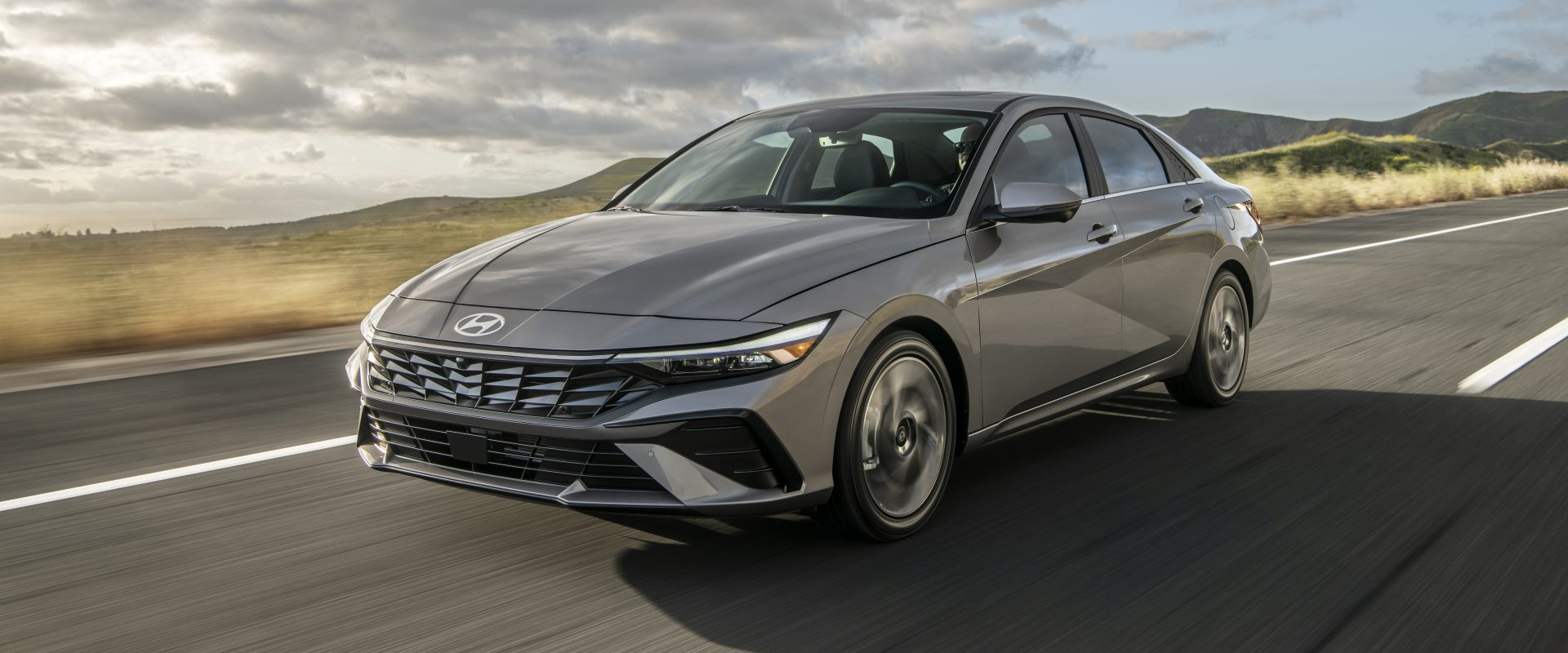2014 Chevrolet Silverado
The Chevrolet Silverado, the perennial number two selling pickup truck in America, was last redesigned for 2007. At that time, fuel economy was not a major concern for pickup truck buyers. But since then gas prices have steadily risen and both RAM and Ford have responded with more efficient, but capable V6 powertrains. So, when it was announced that the all new, 2014 Silverado would still use a V8 as its primary power, truck watchers wondered if Chevy didn’t get the message. Well, apparently they did.
Chevrolet not only got the message, they answered in triplicate, with three all new, totally modern engines. And, in the process wrestled the light duty pickup towing and V8 fuel economy crowns back into the GM fold.
But, what about the 2014 Chevrolet Silverado as a whole? Was this truck worth a 7 year wait? After all, the new Silverado doesn’t look radically different than last year. A taller, bolder twin-port grille, yes. A more rugged and upright stance, certainly. And a touch more modern with available projector beam headlights. Sure. But the big differences are in the details.
The hood is now made out of aluminum, just one of the Silverado’s many weight saving measures. Others include a roll formed steel box and aluminum suspension components. Though big pickup trucks will probably always resemble moving bricks, GM put a big emphasis on aerodynamics for both fuel economy and noise control, with triple-sealed inlaid doors, new body mounts, cab-to-box seals, and even a spoiler shaped tailgate top.
 Still, Chevrolet is committed to the working man, as the new Silverado has added many features to help them carry out their daily tasks, including a damped EZ Lift and Lower tailgate, Avalanche-inspired rear bumper side steps and box grab handles, under bed rail LED lighting, box mounted upper tie downs, and standard box top caps.
Still, Chevrolet is committed to the working man, as the new Silverado has added many features to help them carry out their daily tasks, including a damped EZ Lift and Lower tailgate, Avalanche-inspired rear bumper side steps and box grab handles, under bed rail LED lighting, box mounted upper tie downs, and standard box top caps.
But, what about those three new engines? All are up to date with all-aluminum blocks and heads, direct injection, variable valve timing, and cylinder deactivation.
The trio starts with a 4.3-liter V6, but the high volume power plant is a 5.3-liter V8 rated at 355-horsepower and 383 lb-ft. of torque. It also rates 23 miles-per-gallon Highway. That’s the best of any truck V8 and even beats the Ford F-150’s popular EcoBoost V6. It will out tow it as well, and all light duty V8s, hauling a max of 11,500-pounds. Top engine option will be a 6.2-liter V8.
One of the few carryover parts is the Hydramatic ZL60 six-speed automatic transmission, but each engine will get its own rear end. Both manual and AutoTrac hi-low four-wheel drive systems are again available. New on the Z71 is Hill Decent control. The rear suspension maintains its two-stage multi-leaf springs, but gets improved bushings and new shocks. Four-wheel disc are standard with new, longer life corrosion protection.
 The interior gets a full-scale re-design including better, softer materials all around and a more functional layout with a very vertical dash and big handed controls. The shifter is still column mounted, which helps free up space in the cabin. The standard bench seat has a bucket style form, or you can opt for real buckets with a wide, deep center console between. New high-density seat foam delivers improved comfort.
The interior gets a full-scale re-design including better, softer materials all around and a more functional layout with a very vertical dash and big handed controls. The shifter is still column mounted, which helps free up space in the cabin. The standard bench seat has a bucket style form, or you can opt for real buckets with a wide, deep center console between. New high-density seat foam delivers improved comfort.
The six-gauge layout is great. That plus an info screen provides all of the information you could want in a working truck that will also be spending a lot of time doing family duties. And the latest version of Chevrolet’s My Link infotainment system will help keep you connected as well as entertained.
Crew Cabs, now 60% of the market, have doors that open wider than before. Doors on the extended Double Cab model are now front hinged, opening car-like, instead of clam-shell style. That, plus a forward b-pillar makes the Double Cab rear seat now more suitable for adults.
Whether on the way to the job site or the weekend getaway, you’ll find the new Silverado to be much quieter than before. Silverado’s ride remains a smooth one, but now with better body control thanks to a stiffer but lighter structure and re-vamped suspension. The new electric power steering also delivers an impressive amount of feel through a grippier steering wheel.
So far, Chevrolet has only released Fuel Economy Ratings for the 5.3 V8, which are 16-City, 23-Highway, and 19-Combined in rear drive; and 16-City, 22-Highway, 18-Combined for the 4X4.
Regular cab Silverados will begin at $24,585. That’s the same price as the current model; and GM is looking to tow the pricing line with all cabs. Trims include Work Truck, LT, LTZ, and new premium High Country for the Silverado buyers who want it all.
Despite first impressions, the 2014 Chevrolet Silverado is indeed a huge improvement over the current model, and it has certainly caught up with the pack when it comes to fuel economy and technology. But more importantly, everything seems to fit into one cohesive, tightly designed package. It’s not going to make an F-150 fan switch, but we are certain it will keep the Chevy faithful happy for years to come.
Specifications
- Engine: 5.3-liter V8
- Horsepower: 355
- Torque: 383 lb-ft.
- EPA: 16 mpg city/23 mpg highway
2024 Hyundai Elantra
Basic Transportation At Its Best…And That Is A Compliment
For those of you who write in every week bemoaning the fact that all we seem to do around here is test incredibly expensive cars and EVs that only the very well to do can afford, this one’s for you. It’s a commuter and budget friendly mainstay from Hyundai, the compact Elantra sedan. And, it has been nicely updated for 2024.
We clearly do enjoy driving high-performance machines and ultra-luxury rides around here, but like most of you, when it comes time to drive home at the end of a long workday, we do so in something much more practical and affordable, like this 2024 Hyundai Elantra sedan.
If you’re thinking the front end has gotten more aggressive, you’re right. Hyundai calls it a “Shark Nose” theme, and we’re guessing they were thinking more Great White than Hammerhead, though Megamouth shark would also apply. It helps for a low and wide look; more substantial than the typical compact. Other additions for ’24 include slimmer daytime running lights, revised stainless steel Hyundai emblem, reshaped front fenders, sport sedan-style rear diffuser with silver trim; a parametric pattern added to the C-Pillar, and new LED taillights that take up a lot more space on the highly sculpted decklid. Plus, new wheel designs in sizes ranging from 15- to 18-inches.
Standard engine in SE, SEL, and Limited grades is this naturally aspirated 2.0-liter I4 with 147 horsepower and 132 lb-ft of torque. Even with no hybrid assistance, it gets substantial Government Fuel Economy Ratings of 31 City, 40 Highway, and 34 Combined; we averaged a great 38.6 mpg of Regular.
Those high fuel economy numbers mean acceleration times are pretty high as well. It was in no particular hurry to get off the line at our test track, as after a slight jolt of power, it felt pretty sluggish going down the track, taking us a lengthy 9.4 seconds to hit 60 mph. Hyundai’s Intelligent Variable Transmission has some realistic simulated gear shifts built in, and they not only provided the feel of a true automatic, but kept engine noise from becoming overbearing. And while this 2.0-liter may not be a house-on-fire off the line, it has no problem keeping up with traffic, and feels like just the perfect amount of power for a practical and safe commuter car.
There are other engine options too. Two choices if you want to go faster, a 1.6-liter turbo with 201 horsepower in the Elantra N Line, and a 276-horsepower turbocharged 2.0-liter for the Elantra N; plus, one with even better fuel economy, a 1.6-liter hybrid with a 139 horsepower total output.
And despite some significant understeer, there was good feel through the cones of our handling course, both in steering and chassis feedback. We wouldn’t quite call it “point and shoot,” but it responded to inputs fairly quickly, with only moderate body roll. All-in-all, when it comes to performance, it doesn’t claim to bring a whole lot to the table, but does clearly overachieve with what it does bring.
And Hyundai is always overachieving when it comes to packing in features, yet has found a way of keeping things refreshingly simple with a good mix of touchscreen and manual controls. Lots of space too, both up front in the surprisingly wide front buckets, and in the rear bench with ample room for three. Updates for all Elantra interiors include softer materials on the door panels, upgraded instrumentation and additional charging ports, plus a surround view monitor and new H-Tex simulated leather for Limited trim.
Elantra pricing starts with an SE at $22,775, the SEL comes in at $24,725, Limited begins at $28,215, and the sporty N Line starts at $29,615. If you’re interested in the hybrid, base Blue starts at $27,400 with Limited at $30,600.
Some might say there’s not a whole lot that’s earth shaking about the 2024 Hyundai Elantra, but that’s mostly why we like it so much. When it comes to just delivering good, basic transportation with a high dose of unexpected amenities, Hyundai delivers once again.
Specifications
- Engine: 2.0-liter I4
- Horsepower: 147
- 0-60 mph: 9.4 seconds
- 60-0 Braking: 111 ft (avg)
- MW Fuel Economy: 38.6 MPG (Regular)
- Transmission: IVT
- Torque: 132 lb-ft
- 1/4 Mile: N/A (Track Maintenance)
- EPA: 31 City / 40 Highway / 34 Combined







